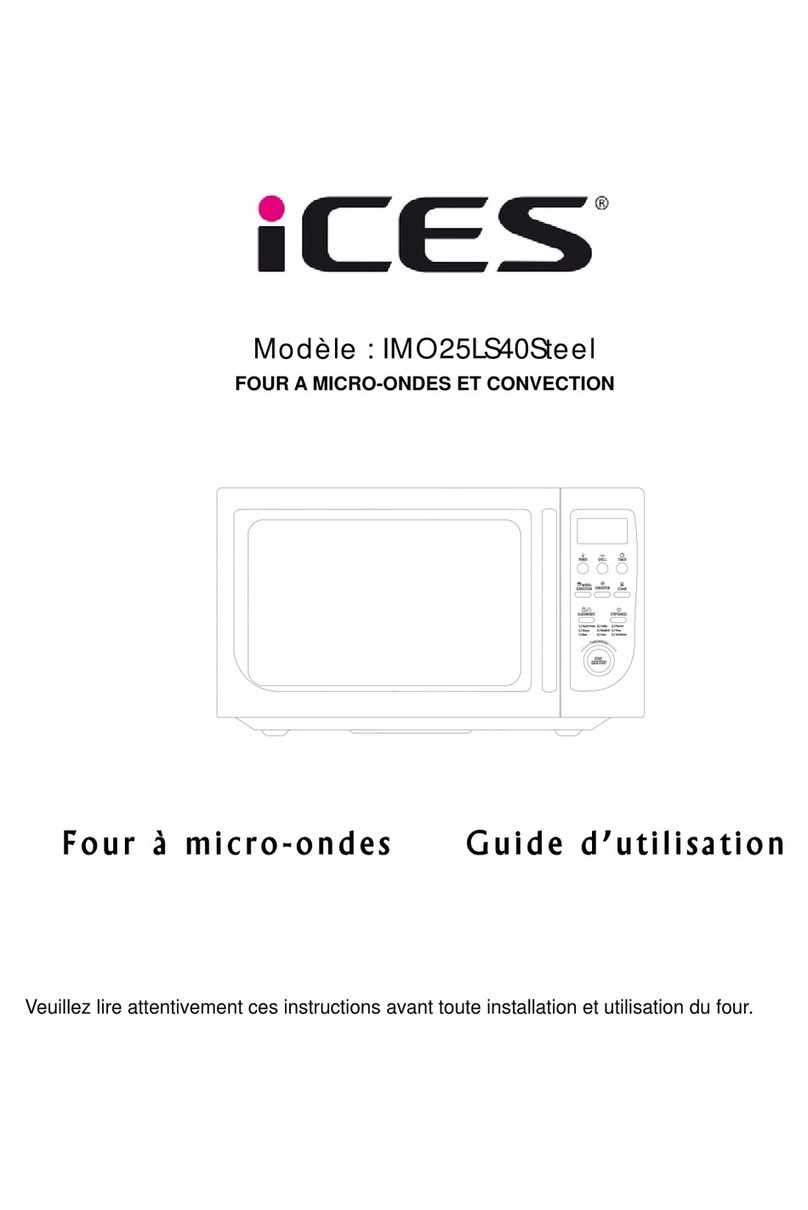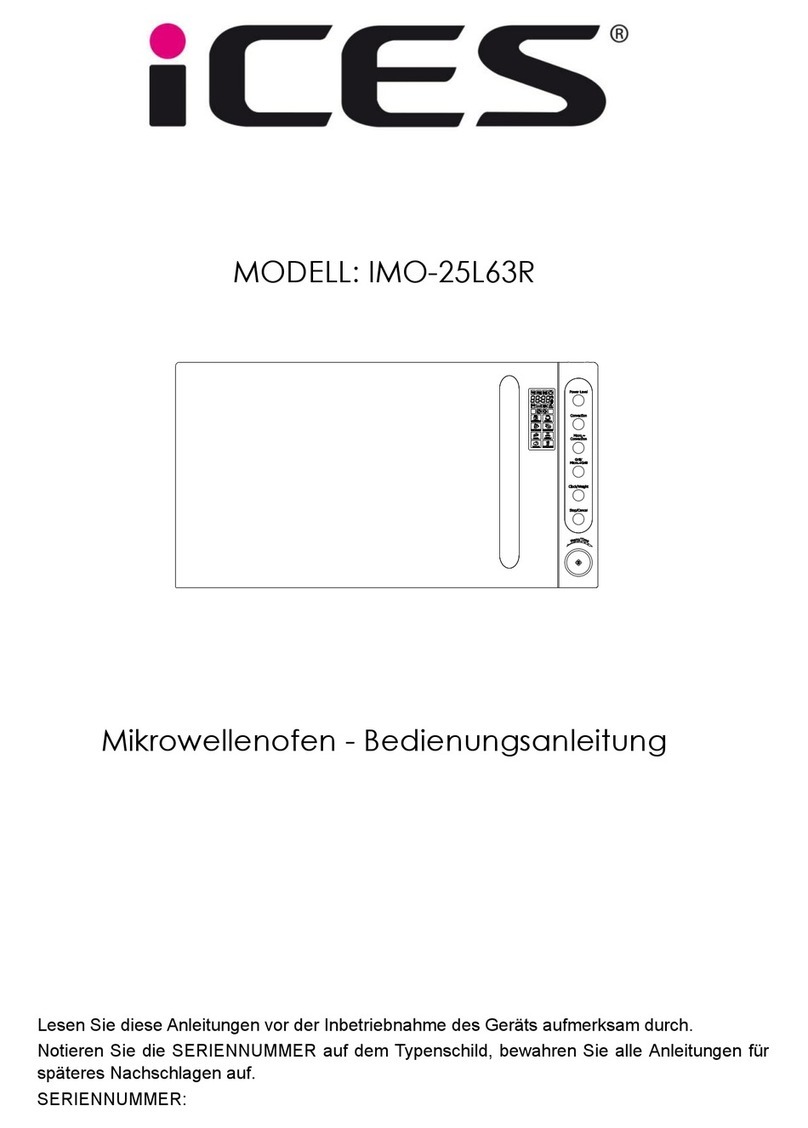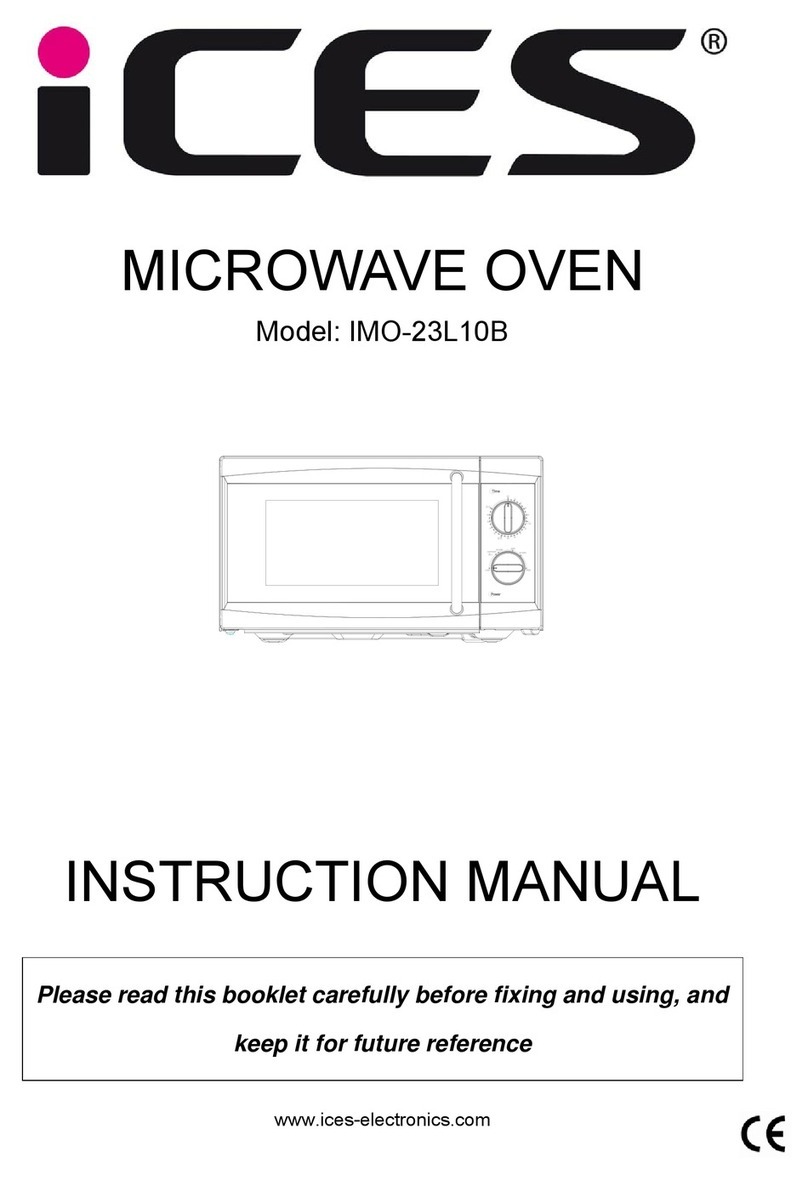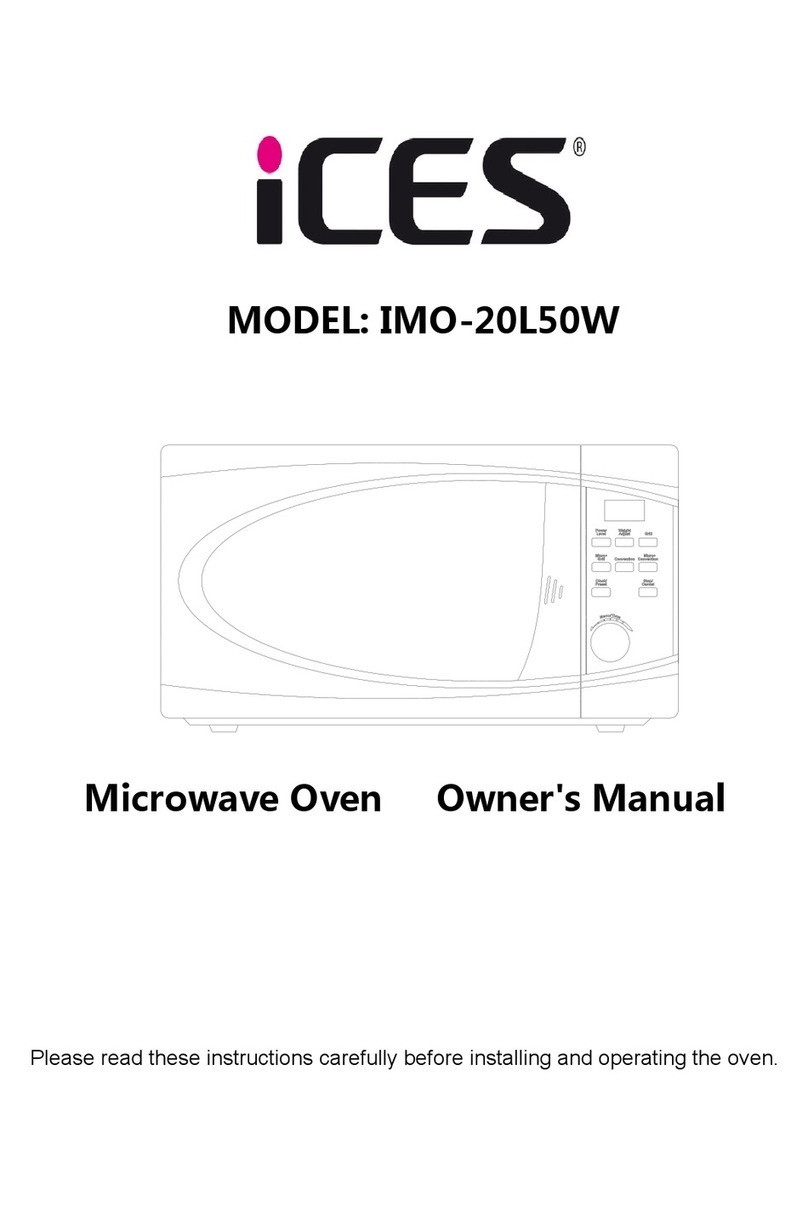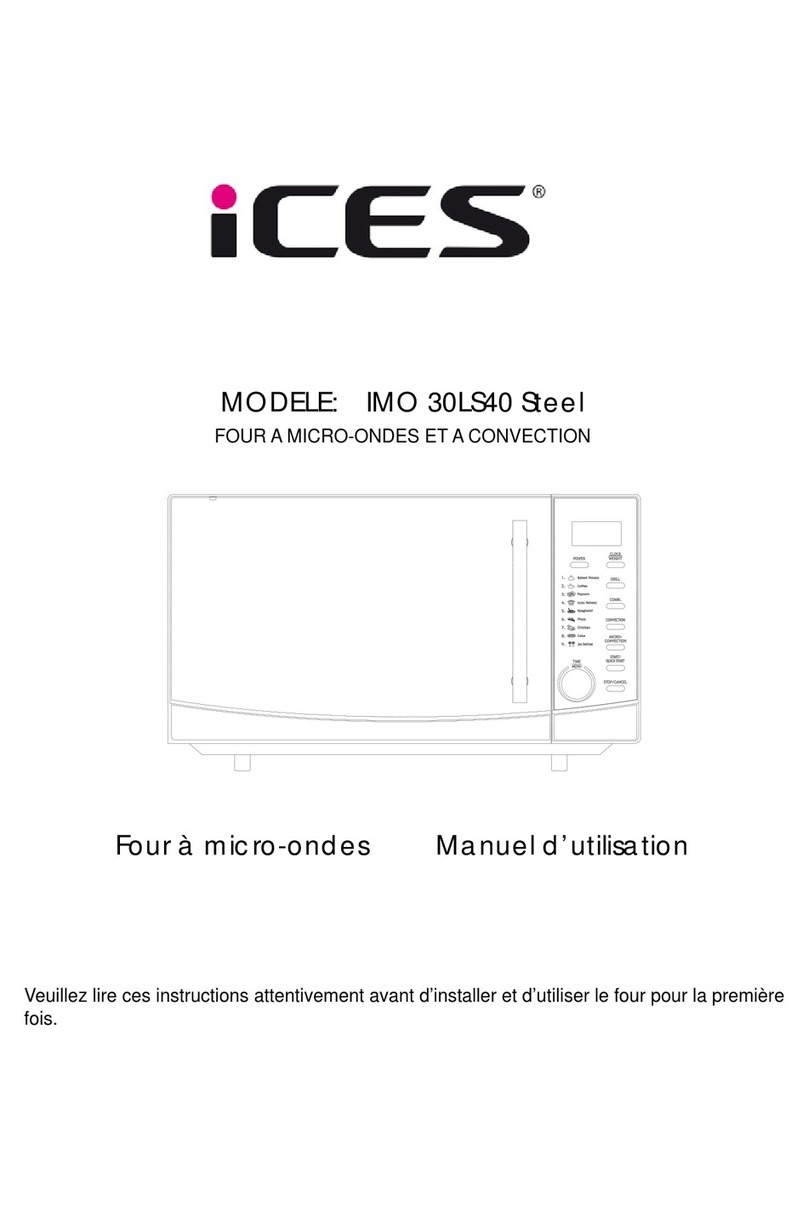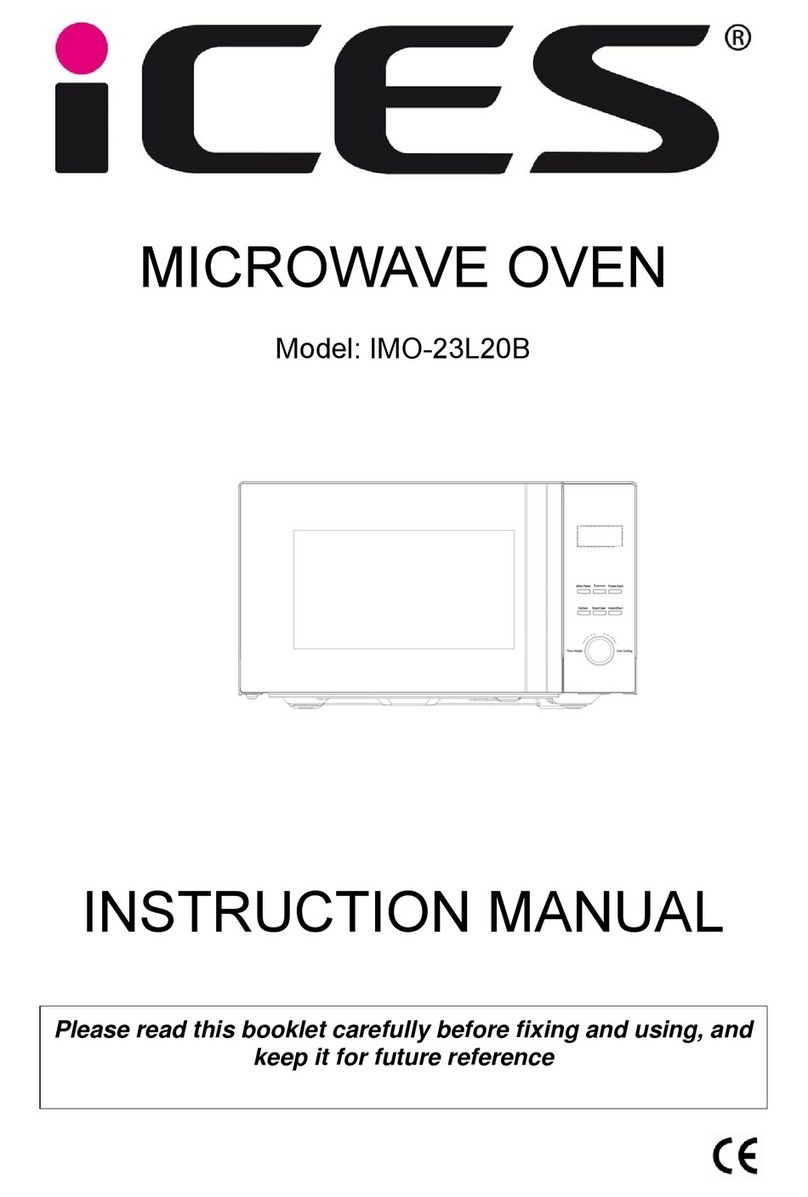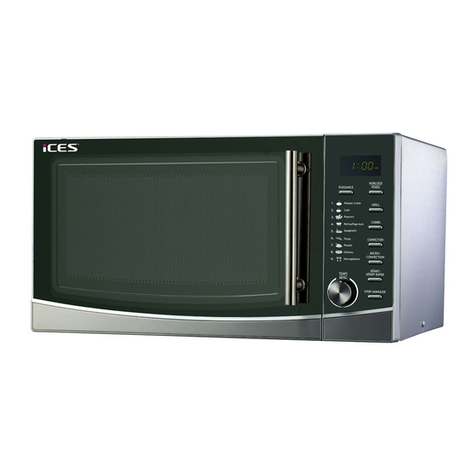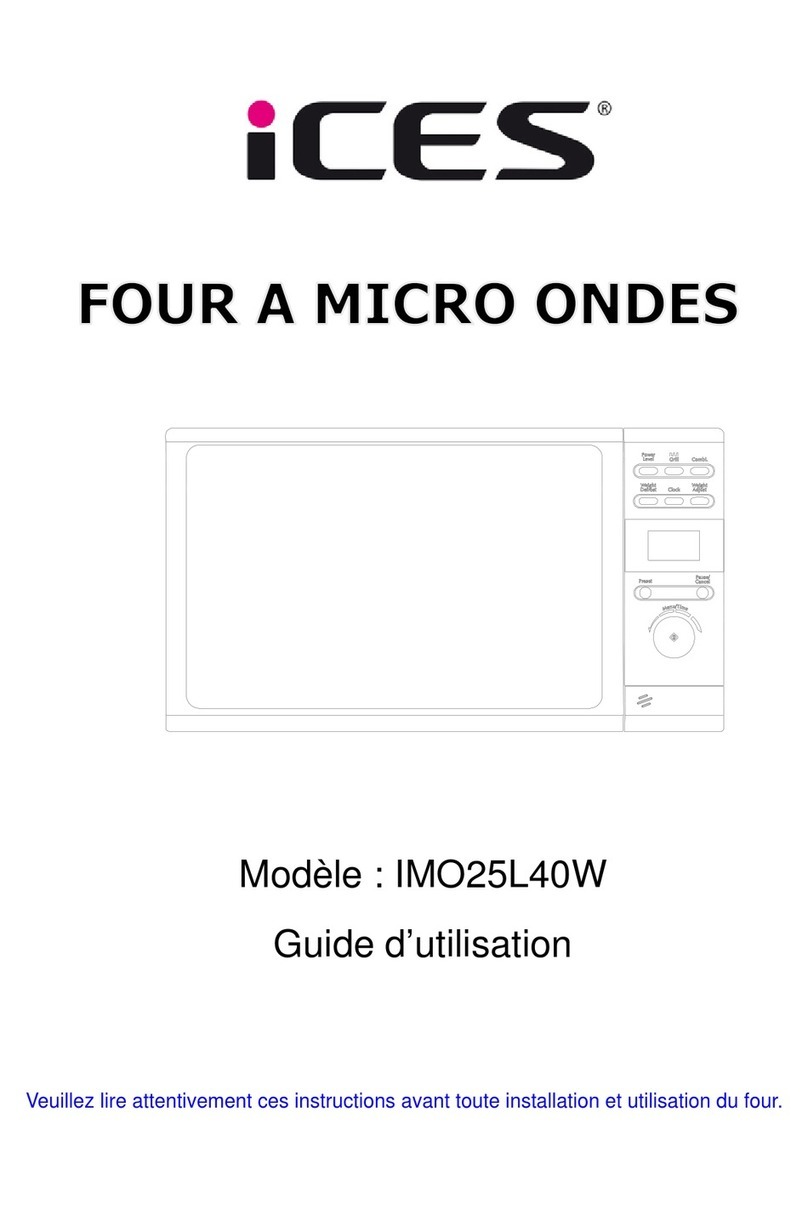.Installation…………………………………………………………………………………………………………………
1. Take out all the packing. If there is a safe film over the
oven, tear it off before Use. Check carefully for damage. If
any, immediately notify dealer or send to the manufacturer’s
service center.
2. Microwave ovens must be placed under dry and
non-corrosiveness environments, kept away from heat and
humidity, such as gas burner or water tank.
3. To ensure sufficient ventilation, the distance of the back of
microwave to the wall should be at least 10 cm, the side to
the wall should be at least 5 cm, the free distance above the
top surface at least 20 cm. the distance of the microwave to
the ground should be at least 85 cm.
4. The position of the oven shall be such that it is far from the
TV, Radio or antenna as picture disturbance. The distance
should be more than 5m.
5. The appliance must be positioned so that the plug is
accessible, and must ensure a good grounding in case
leakage, ground loop can be formed to avoid electric shock.
6. The microwave oven must be operated with the door
closed.
7. The microwave oven must not be placed in a cabinet. The
microwave oven is intended to be used freestanding.
8. The back of the oven must be placed against a wall.
9. As there is manufacturing residue or oil remained on the
oven cavity or heat element, it usually would smell the odor,
even a slight smoke, It is normal case and would not occur
after several times use, keep the door or window open to
ensure good ventilation. So it is strongly recommended to
place a cup of water in the turntable, setting at high power
and operate for several times.
.Important safeguards…………………………………………………………………………………
The following basic precautions should always be followed
